We’re months into the pandemic, and the world is still reeling from how much daily life has changed. Every day, people have to modify their routines or, in some cases, completely change them. One segment of the population that’s been heavily impacted is gym members.
According to 2018 data from the International Health, Racquet & Sportsclub Association (IHRSA), many Americans frequent gyms:
- Gyms and health clubs had over 6.1 billion consumer visits in 2018, a nearly 2 billion increase compared to 10 years prior.
- 62.5 million Americans maintain a gym membership.
- Nearly 40,000 health club facilities were in operation across the country in 2018.
When gyms were forced to shut down due to COVID-19, it affected millions of people, from gym members to gym owners. However, since restrictions have relaxed, fitness facilities across the United States are reopening their doors.
Concerns about gym reopening plans
Gyms are opening, but are people ready to return? A study from Azurite Consulting says yes, but with conditions. In the absence of a COVID-19 vaccine, 85 percent of Americans indicate that multiple measures must be implemented at their gyms before they will feel comfortable returning. What kind of measures? Here are the leading ones:
- Increased routine sanitization (64 percent)
- Capacity limits (46 percent)
- Hand sanitizer and masks available upon entry (39 percent)
- Machines and equipment spaced 6 feet apart (35 percent)
Anecdotal evidence from gym owners and fitness professionals nationwide support the above stats. For example, Rex Freiberger, certified personal trainer and CEO of Discuss Diets, says customers’ biggest concerns are whether or not safety procedures will be followed and rules enforced.
“Many businesses are simply putting up signs and thinking that’s enough, without bothering to actually enforce mask-wearing or social distancing guidelines,” Freiberger says.
It’s a similar situation at Gymnazo, a California gym led by CEO Paden Hughes. She says her customers have expressed concerns about sanitization efforts, the spacing between workout areas, equipment sharing, whether staff members will be masked, and how to navigate heavier-trafficked areas like the entryway and restrooms.
“California is a state that’s had a lot of changes in its restrictions, and we’ve had to pivot four times,” says Hughes. “These customer concerns were most prevalent during the initial gym reopening we did in June. However, during our most recent reopening in September, we had little to no questions about our safety practices. This is largely because we offer virtual training, so anyone who wasn’t comfortable training indoors could choose to train that way.”
If you’re planning your gym reopening, or if you’ve already opened and are having trouble convincing customers to return, the following sections explain what measures you can take to make your gym a welcoming and pandemic-friendly establishment.
5 best gym reopening considerations
5 key gym reopening considerations
1.Sanitization and social distancing measures
“Gyms need to be heavily sanitized,” says Freiberger. “You can’t count on patrons to properly wipe down their equipment. Gym employees should wipe down equipment that isn’t being used, at least once an hour during busy times. There should be hand sanitizer dispensers, disposable towels, and spray bottle cleaners throughout the facility.”
David Maldonado, founder of ZERO Training Center in Pearland, Texas, adds that sanitization supplies should be clearly visible and easily accessible for everyone to use, not just staff. “Staying safe and healthy is the responsibility of everyone who decides to step into a gym during these times.”
Hughes has several recommendations when it comes to keeping your gym sanitized and socially distanced:
- Tape floor space into areas of at least 6-feet by 6-feet. Notably, Hughes has chosen to use 8-feet by 8-feet sections.
- Place antibacterial spray next to each workout space and ensure equipment is thoroughly cleaned between uses.
- Offer disposable gloves for extra protection.
- Require employees and customers to bring their own water.
- Clearly mark entry and exit points.
- Keep fans running and, when possible, open doors to keep fresh air circulating.
After implementing these safety measures, Hughes says it’s important to share your sanitization efforts with your customers. “Set up your gym to meet these standards, and then record a video walking your members through their new, extra-clean fitness experience. Keep it informative, free of your personal opinions, and cheerful,” she says.
2. Hours of operation
While some gyms have changed their hours of operation for various reasons, Maldonado hasn’t seen the need to in Texas. “We have a private facility that enables us to keep our staff and members informed of any changes that may happen from one day to the next because of COVID-19. Additionally, the size of our gym and staff allows us to keep our facility clean and safe for all without limiting our business hours,” he says.
Meanwhile, at Hughes’s gym in California, there’s been a slight shift in service availability. “As part of our pivot, we had to pick the most popular fitness sessions and times,” she says. “It’s worked out well. Pre-pandemic, we offered 125 sessions per week. We now offer 85 sessions per week. Since the initial thinning of our sessions, we’ve maintained the same schedule throughout the pandemic. Thankfully, we’ve been able to hold onto more than 80 percent of our members.”
Frieberger adds that gyms should keep enough staff working each shift. Gyms with limited staff, especially overnight, won’t be sanitized sufficiently during those times. Customers will notice this and change their behavior accordingly, which could mean ending their membership.
3. Crowd limitations
“Max occupancy for a given gym really depends on its size,” says Frieberger. “But as a customer, I wouldn’t feel comfortable being around more than five or six other gym patrons in a given area.”
Maldonado’s gym has always had a policy limiting the number of customers in the gym at one time — even before the pandemic. “Since we opened over five years ago, our policy has always been to limit gym capacity to no more than six clients working out at any given time,” he says. “This has made the transition during the pandemic easier than other gyms. We also have no plans to change this policy once pandemic restrictions have been eased.”
Hughes’s gym is larger, but it’s still only able to support 10-percent occupancy. “Since we have a large facility, that’s 23 people, including staff. We can run our COVID schedule within this capacity restriction. Many gyms can’t say the same, so we remain thankful for our continued operation,” she says.
4.Mask-wearing policies
Frieberger recommends a zero-tolerance policy on masks. “They should be worn at all times. To ensure this remains the case, offer breathable masks to patrons who complain that they can’t work out in one.”
Maldonado and Hughes share a similar view on wearing masks at their gyms, though they allow for some flexibility. Maldonado and his staff ask that anyone entering the facility wear a proper face mask since it’s required in Pearland.
Texas state law notes that if a distance of 6 feet can be maintained in a fitness setting, then the mask can be removed. “We leave that decision up to each client, and respect their decision — as long as it aligns with current local laws,” Maldonado says.
Hughes’s staff remains constantly masked. “Both our members and employees are required to enter wearing masks. But members can safely unmask in their designated workout squares where they are 20 feet away from anyone else.”
5.Online solutions
Many industries have gone virtual in light of the pandemic, and fitness facilities are no exception. Maldonado’s gym uses a fitness-focused software solution to ensure it maintains the maximum six-person capacity. He says it’s a convenient tool for both the facility and its clients.
“Moving forward, we look to implement more online solutions to make our personal training even more efficient,” Maldonado says.
Hughes has invested in multiple solutions to keep her gym going, and customers safe and happy. For example, she’s implemented Zoom for her virtual training services, along with a complementary solution that automatically emails Zoom links to gym members using those services.
“We’ve bought tons of hardware and software aimed at improving our virtual fitness experiences,” she says.
There’s a lot to consider for a proper gym reopening. It can be a challenging task, even for veteran gym owners. Using the advice above can make it a more seamless experience.
For additional help, you can turn to Jotform, an easy-to-use form builder used by many gym owners. The pandemic has added several pressing to-do items to gyms’ normal routines, including the need for informed consent forms, screening checklists, and several other COVID response forms.
Check these items off your list quickly with Jotform, and get back to helping your clients get fit.


























































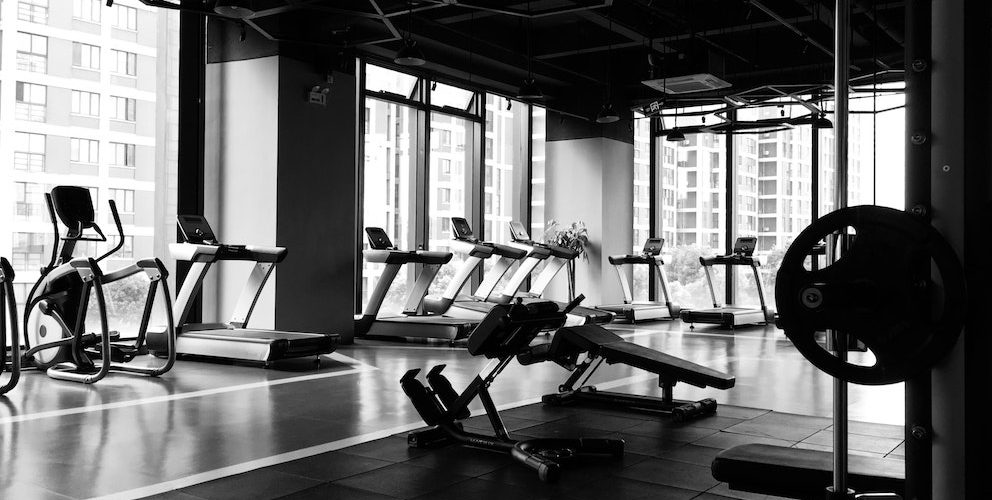




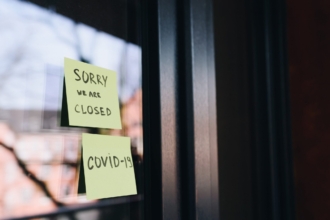



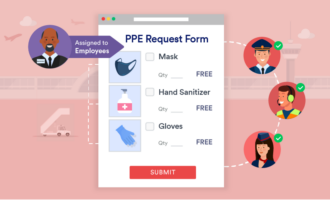







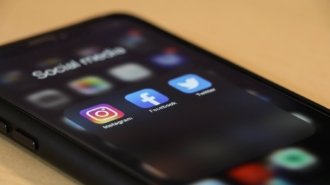
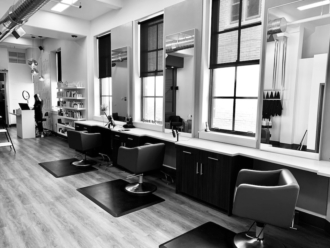
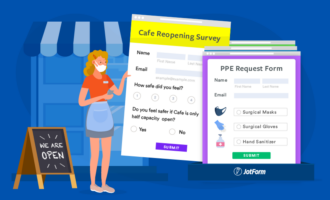









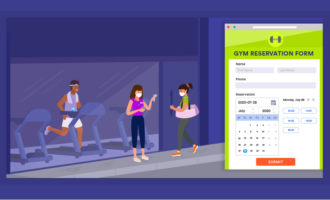







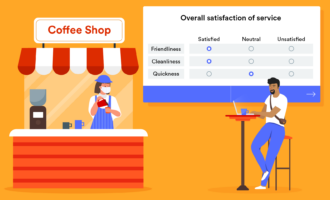
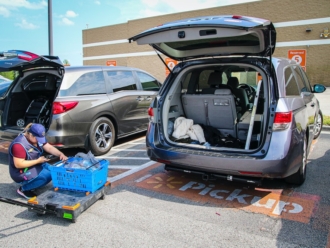
Send Comment: